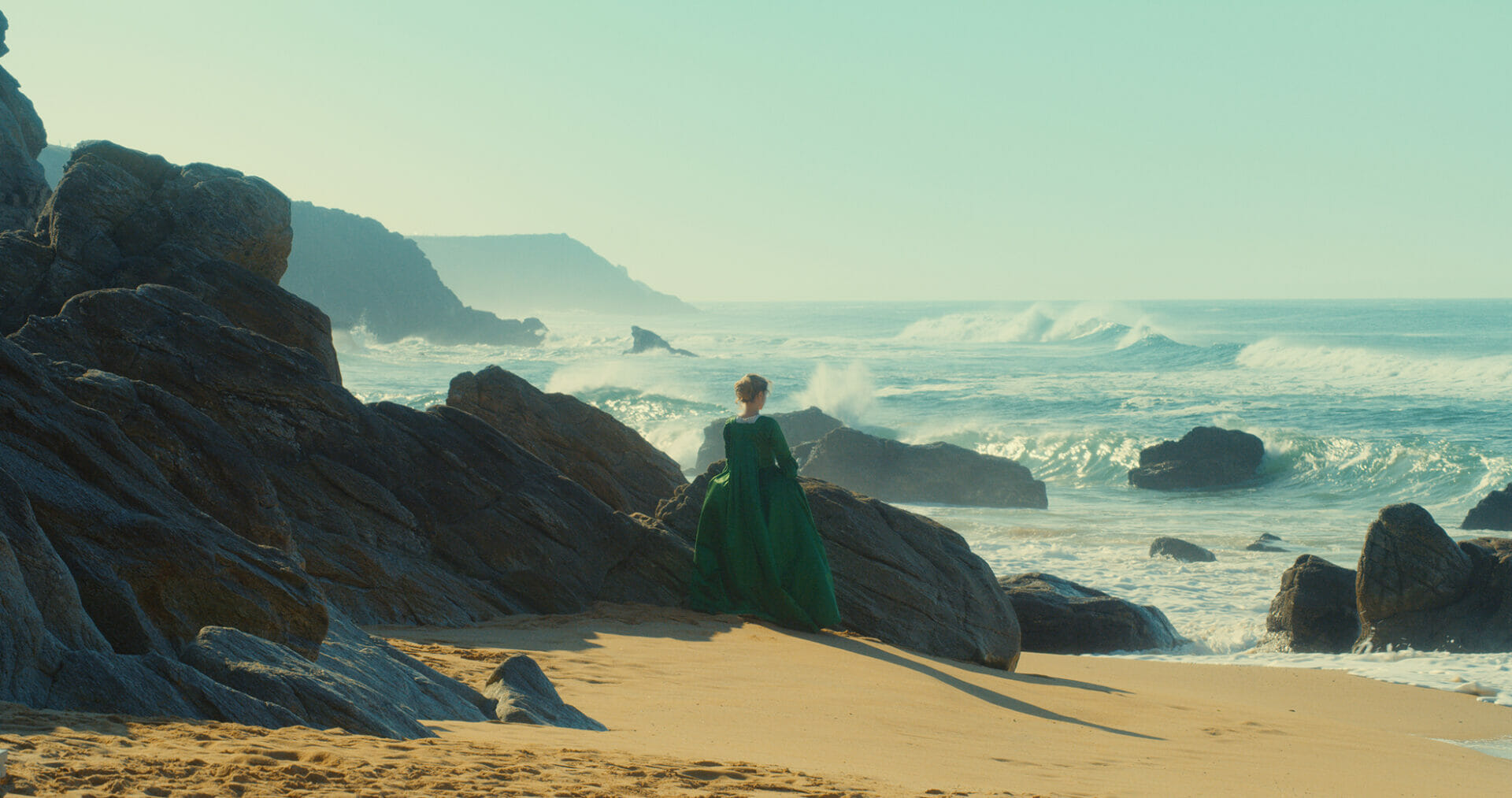
The Art of Joy by Goliarda Sapienza Miniseries Review | Defiance, Desire, and the Making of a Feminist Icon
Runtime
Love is Modesta’s chosen weapon and her most significant risk. A survival strategy to help her escape her past and rewrite the story others expect her to live. The miniseries The Art of Joy (L’arte della gioia), directed by Valeria Golino and adapted from Goliarda Sapienza‘s 1998 posthumous and provocative novel of the same name, follows the tumultuous life of Modesta Spataro (played by Tecla Insolia), from a young and wild Sicilian girl to a self-aware, fiercely independent woman determined to forge her destiny against the constraints of gender, class, and tradition.
In six episodes – five directed by Golino and one by Nicolangelo Gelormini – The Art of Joy plunges viewers into a whirlwind of emotions. It draws them deep into Modesta’s mind’s complex and contradictory labyrinth. By interweaving immersive storytelling with first-person narration, the director masterfully captures the most intimate essence of the novel, though the miniseries only covers the first half of the story. The Art of Joy had its world premiere at the 77th Cannes Film Festival. After being released in Italian cinemas in two parts in 2024, it finally made its television debut on Sky Atlantic on February 28, 2025.
- The Art of Disobedience
- The Rise of Modesta
- “The Love That Moves the Sun and Other Stars”
- Becoming Modesta: The Making of the Antihero
- Sights and Sounds of The Art of Joy
- The 70th David di Donatello Awards: Between Polemics and Victories
The Art of Disobedience
The Art of Joy is an ode to freedom, self-awareness, and self-determination, but also to dissent and disobedience. Modesta never redeems herself; she has no guilt. I don’t think there is a stronger and more contemporary message.
Director Valeria Golino – The Art of Joy: A Tale of Defiance and Desire
Born in the Sicilian countryside on January 1, 1900, Modesta’s life always felt too small for her ambitions. From an early age, she worked on the family farm and cared for her mother and disabled sister. Her only friend was Tuzzu (Edoardo Li Gioi). A boy with eyes like the sea, he opened the door for her to explore her sexuality. Since childhood, she has always felt an insatiable hunger for knowledge, love, and freedom. “I have always stolen my share of joy from everything and everyone,” says Modesta. Tecla Insolia’s intense and sensual gaze, at just 21, burns through the screen. This line sums up her philosophy of life, the force that has propelled her forward without regard for rules, limits, or even morality.
Suddenly, a traumatic event and a tragic accident leave her orphaned. The authorities place her in a convent, but instead of breaking her, it becomes the place where she begins to plan her future. Much like Yorgos Lanthimos‘ Bella Baxter in Poor Things, Modesta enters high society for the first time but refuses to play by its rules and rewrites them to suit her vision of freedom. Here, she learns the life of a novice and becomes the protégé of the charming Mother Leonora (Jasmine Trinca), with whom she forms a murky relationship driven by admiration and desire. Modesta is blasphemous and outrageous, and she wears these qualities as virtues.
The Rise of Modesta
Betrayal, cruelty, even murder: Modesta knows no bounds in her quest for power and freedom. With behavior unbecoming of a novice, Modesta no longer has a place in the convent. She is not a child of God but a daughter of the earth and untamed nature.
Her path leads her to Villa Brandiforti, an aristocratic estate in the Sicilian countryside, where she will unravel the threads of Leonora’s past. There, she meets Princess Gaia (played with sharp wit by Valeria Bruni Tedeschi) and her “daughter” Beatrice (Alma Noce), nicknamed “Cavallina” (little horse) because of her wobbly step. Their presence will open a new chapter in Modesta’s life. Believing herself to be the queen on the Brandiforti family’s chessboard, Modesta soon realizes that she is merely a pawn in their intricate schemes. Still, she will find a way to win the game.
“The Love That Moves the Sun and Other Stars”
The estate also bears sweet fruit as Modesta experiences her first taste of pleasure through relationships with women and men. The childish and naive Beatrice soon becomes her secret lover, and their relationship becomes the most emblematic of the novel and, by extension, the miniseries.
And so, for the first time in my life, fui amata amando, I loved and was loved in return, as the aria goes. Something so rare that even now, I can recall the feeling of lightness that made me open my eyes in the morning, secure in the new adventure that was born from our embrace.
The Art of Joy by Goliarda Sapienza
Diving deep into herself, Modesta realizes she has never truly known love as a sweet, sincere bond. She understands that she can only find it with a woman, still carrying the wounds left by men. Through the female gaze, she begins to see love not as a possession or power but as an intimate, nurturing connection. Unfortunately, the series only shows so much of her story. However, the novel continues exploring the evolution of Modesta and Beatrice’s relationship into adulthood. Much like the protagonists of Céline Sciamma‘s Portrait of a Lady on Fire, The Art of Joy shows the transformative power of love between women as an act of personal freedom and a radical resistance to societal expectations.
Becoming Modesta: The Making of the Antihero
The ominous atmosphere and theatrical performances draw the audience into these tangled narratives, forcing them to question their notions of right and wrong. Critics initially deemed Goliarda Sapienza’s book too scandalous for its uninhibited portrayal of eroticism and female sexuality. Still, in a strange twist, her story now resonates with a much more modern audience.
Visually arresting and at times disturbing, the miniseries intends to unsettle, but that is precisely the point. Modesta spares no one, not even the audience. Vital, morbid, unfiltered, and anarchic: Modesta is the antihero the audience can’t help but admire. Many may define her story as a coming-of-age story. However, Modesta’s journey is far from a simple path to maturity or conventional adulthood. Though controversial, she does not follow the classic arc of growth or redemption. Instead, she seems to move closer to the primal instincts that have always lived within her. She learns how to harness those instincts, weave herself into the fabric of society, and claim her place within it.
Tecla Insolia, a bright revelation in contemporary Italian cinema, speaks of a deep connection to her character, rooted in the legacy of feminist ancestors and the battles they fought before her. Thanks to what she describes as a symbiotic relationship with director Valeria Golino, who guided her in unleashing her full potential, she made the character feel authentically real.
Surprisingly, Golino’s ties with Goliarda Sapienza will not be severed. Indeed, she will play the writer herself in the upcoming film Fuori, directed by Mario Martone and based on Sapienza’s autobiography The Certainties of Doubt (1987).
Sights and Sounds of The Art of Joy
The miniseries format is only a convenience. The Art of Joy has the scope and ambition of a major motion picture. Together with cinematographer Fabio Cianchetti and set designer Luca Merlini, Golino captures the historical and social context of the early 20th century with faithful realism, moving from the wild lands of Sicily to the muffled walls of monasteries and aristocratic villas. The creative process and the staging highlight not only the evolution of the characters but also their emotional nuances. For example, the Brandiforti estate, also featured in Netflix‘s The Leopard (2025), is as labyrinthine and majestic as described in the novel, and it becomes a mirror for all the hidden layers of the family.
Icelandic composer Tóti Guðnason (Oscar-winning for Joker) created the incredible soundscape. His compositions evoke earthy tones that perfectly complement the world of The Art of Joy. The hypnotic chant that concludes each episode adds depth to this complex tale, leaving a mournful sense of anguish and unease. It is Parola by Donato Dozzy, performed by Anna Caragnano, an electronic soundtrack with a vocal loop that almost feels like a witch’s spell.
Bold and sophisticated, The Art of Joy deserves a broader discussion and audience. A story of loss, love, conquest, and lust, Modesta’s body moves through excess, ultimately seeking success and liberation. With its unapologetically bold narrative and complex characters, the miniseries transcends its format to explore themes of self-discovery, power, and empowerment. Ahead of her time, Goliarda Sapienza likely understood that a multi-faceted character like Modesta would inspire many generations to come.
The 70th David di Donatello Awards: Between Polemics and Victories
The Art of Joy has made a strong impression on the critics. One of the leading contenders for the 70th David di Donatello Awards, with 14 nominations, including Best Picture, it sparked widespread debate about its deserved place in the competition, being a miniseries. Competing with other titles such as Paolo Sorrentino‘s Parthenope and Andrea Segre‘s The Great Ambition (Berlinguer. La grande Ambizione), The Art of Joy won the David di Donatello for Best Adapted Screenplay. There’s more: Tecla Insolia and Valeria Bruni Tedeschi won the David di Donatello for Best Actress and Best Supporting Actress, respectively.
Tag
Buy a ☕ for Hypercritic











